When the Dufferins visited Dhaka
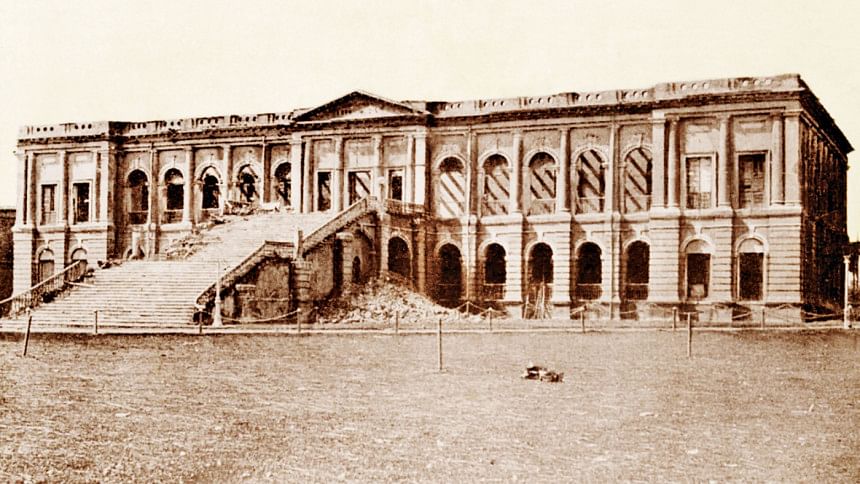
The failed Indian Rebellion of 1857, which saw the ultimate triumph of the East India Company, nonetheless also led to its demise and the emergence of the last great colonial empire in modern history- the British Empire in India - popularly known today as the British Raj (1858-1947). In 1858, power was transferred from the Company to the Crown-in-Parliament in England, with the British monarch as the sovereign head of the Indian empire. Therefore, British India came to be ruled directly by the crown for the next eighty-nine years until its independence in 1947, into two separate countries. Thus, from 1858 onwards the hitherto Governor-General of India also became the Viceroy or the representative of the crown and, presided over the destiny of millions of Indian subjects no less formidable than a potentate himself, thereby enjoying more or less plenipotentiary powers. Altogether, there were twenty-four British Viceroys and Governor-Generals who governed India during this intervening period. They fall into various categories of personalities and capacities and, served for both short and long durations in office.
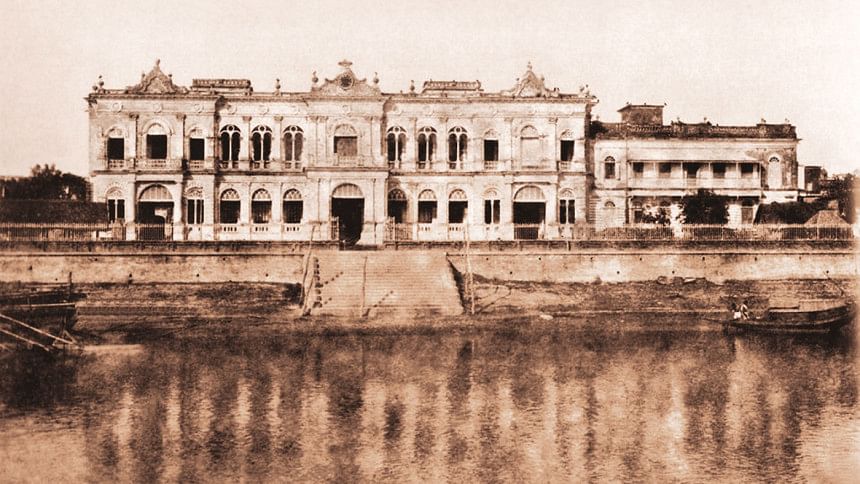
This story is about one such person named Frederick Hamilton-Temple-Blackwood (1826-1902), Ist Marquess of Dufferin and Ava, commonly known in history as Lord Dufferin who was in office from: 13th December 1884 – 10th December 1888. Just before the end of his tenure, he and his wife the Vicereine Lady Hariot (1843-1936) formally known as the Marchioness of Dufferin and Ava, along with their daughters paid a memorable farewell visit to Dhaka from 26-28 November, 1888. What is unique about it is that Lady Dufferin has left behind a chronicle of her Dhaka visit in a book entitled 'Our Viceregal Life in India' published in 1889. Thus, her travel writing has immortalized her impressions of the Dhaka visit in fairly elaborate details, initially entered in her hand written diary. The Dufferin's visit was the greatest social event in the history of Dhaka of the late 19th century, surpassing an earlier visit by the Viceroy Lord Northbrook in 1874. Thus, the city was agog for months following the visit.
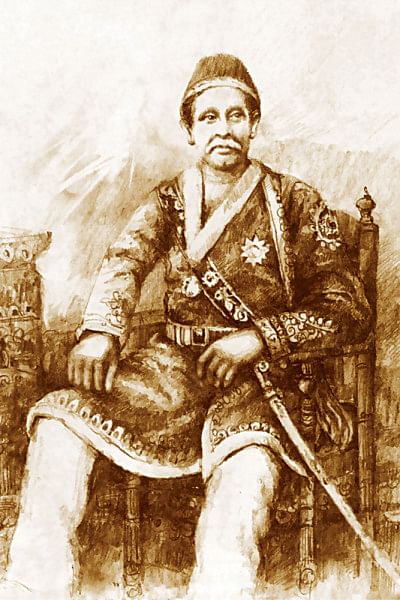
Lady Dufferin should be remembered for her remarkable contribution in establishing the 'Countess of Dufferin Fund' raised in India, which for the first time was able to deliver well-coordinated medical health programs with official backing for the public. The fund promoted a range of laudable medical initiatives and associated programs, especially in women's health and child bearing. One of the earliest beneficiaries of this fund included one of the first female medical graduate and physician of British India and South Asia, Dr Kadambini Ganguly ne̒e Basu (1861-1923). It makes us proud to note that Kadambini's father hailed from Barishal in Bangladesh. Numerous Lady Dufferin hospitals, wards and clinics were started with this fund, some of which still exist namely the Lady Dufferin Ward at the former Mitford Hospital, in Dhaka which was established in 1888-9, by the munificence of Nawab Ahsanullah in memory of lady Dufferin's visit to Dhaka.
The readers are requested to read this article keeping a mental note of the peculiar context of the times. The following event took place a hundred and thirty-two years ago, in the colonial era and that too, at the high-noon of the British Raj. Interesting extracts of Lady Dufferin's visit to Dhaka from her book 'Our Viceregal Life in India', 1889 are presented here. Her narratives are shown within 'inverted comas' against precise dates, interspersed by my own comments under 'Writer's note.'
Monday, 26th: "I went on the barge to Dacca. The place here looks so pretty from the boat. There are such quantities of flags, and such beautiful triumphal arches, and some picturesque mosques and buildings. We dined with the Nawab and drove through the town, where the illuminations were lovely. There were palisades of light, and buildings picked out in fire, and chains of lamps, and when we reached a long avenue leading to the Nawab's house it was lighted by candles the whole way-12,000 candles. His garden was literally transformed into a garden of light, all the beds marked out by lines of fire. We thought 'Ave Ava' in gold letters on an arch was a very happy thought. 'The Nawab' may be said to consist of two persons, a very old father and middle-aged son. The son has all the power and does all the business, but both are devoted to each other, and the son is so attentive to his father, who can scarcely bear him to go out of sight. He cannot go out shooting, or be away half a day from the old man, and it is nice to see them with each other. The son dined and took me in to dinner. He speaks English quite well, and the entertainment was exceedingly well done and nice in every way. After dinner we had native dance music and a nautch. Have I yet succeeded in instructing you as to the extreme propriety and dullness of a nautch? There is never any incident in it, and no apparent purpose, and it is a most incomprehensible amusement, though I like a little of it."
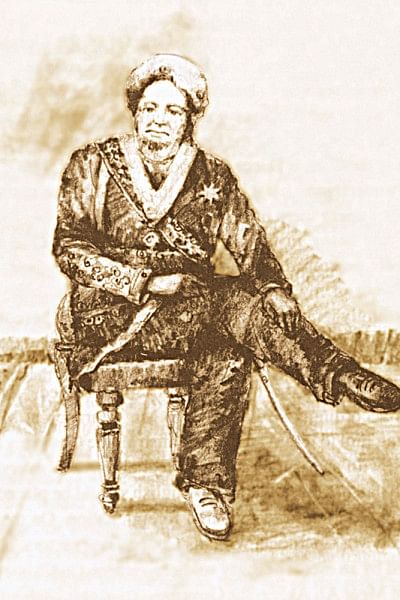
Writer's note: Having reached Narayanganj from Calcutta by a special train, the Viceroy's party broke journey to attend a civic reception in the town and visit a jute mill. The Viceroy and daughters stayed back in Narayanganj, while the Vicereine proceeded to Dhaka on a luxurious houseboat towed by a steamer. The Vicereine having just recovered from a minor throat infection, avoided the civic reception in Narayanganj fearing a recurrence of her condition and went alone to Dhaka and wait. She was rejoined by the Viceroy and their daughters, who arrived in Dhaka from Narayanganj by a special train later in the afternoon.
It is evident that because of old age and circumstances Nawab Abdul Ghani, played a more ceremonial role during the Viceregal visit to Dhaka leaving the details to his son Ahsanullah, who played the actual host being younger, more worldly and fluent in English. The Vicereine was mesmerized by the evening illumination on the grounds of Ahsan Manzil calling it 'a garden of light'. However, when she refers to the candles 12,000 of them by her account that lit all the way to Ahsan Manzil, covering its garden and grounds, it was actually the fairly-tale effulgence from the - 'dia or matir-pradeep' - those small indigenous oil based clay lamps, she had mistaken for candles at a distance. And, by 'beds' in the garden she of course meant the 'flower-beds'.
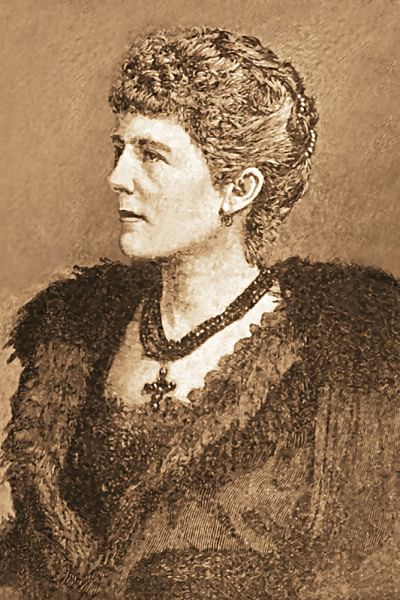
The Dufferins were given a princely reception by the Nawabs of Dhaka, replete with pomp and pageantry during their visit. After a sumptuous dinner at Ahsan Manzil, they attended a gala musical soiree of song and nautch (naach or dance) at the Rungmahal-Jalsaghar of the palace. Here the Vicereine appears rather labile about her impression of the nautch she had witnessed. She could not help but reflect the atypical disinterest then prevalent in the Victorian-colonial era English society in India, to an unique Indian dance form and heritage. The sahibs and memsahibs of earlier generations in India had once enjoyed, appreciated and sponsored nautch even in their homes by celebrated tawaif (courtesan) and baijee (dancing girl), as evidenced from the many visuals and writings, especially of the 18th century. Britons of both sexes had then sang paeans about the radiantly beautiful dancing girls and their superb skills by likening them to paradisiacal houris, ethereal beauties and bewitching dancers. However, the latter day 19th century Britons in India, by then heavily influenced by the bible touting moralizing English evangelists, prejudiced memsahibs forever protective of their men-folk from the enticing Indian vices (read from the warm embrace of the nautch girls) came to consider all things Indian as incomprehensible, decadent, even abhorrent including its rich traditional art forms, such as, Hindu iconography with its seemingly bewildering plethora of deities, and the profusion of rites and rituals during Puja. Furthermore, the trauma resulting from the great Indian rebellion of 1857, for which the insensitive policies of the Company were supremely responsible in fomenting it, nonetheless made things worse. It hardened British attitude. They blissfully retreated into their exclusive enclaves in the - civil lines, cantonments, clubs and hill stations, increasingly isolating themselves from the teeming millions they were destined to rule. Consequently, their erroneous perception of racial superiority, arrogance, prejudice, overt or subtle discrimination replaced the curiosity, spirit of enquiry and appreciation of Indian peoples and culture as patrons, which had once characterized many in the earlier generations of Britons in India. In this regard, note lady Dufferin's patronizing 'finish' to her rather uncomplimentary comment on the nautch she had witnessed. Having already spoken her uninhibited mind on the nautch, she tried to cover it up by tersely concluding that, "though I like a little of it". It goes without saying, that the Nawabs of Dhaka had put out their very best nautch or dancing girls to entertain the Dufferin's, with the likes of Nawaben baijee and above all Abdul Ghani's favorite, the legendary tawaif Achee Saheb amongst others. One can well imagine the rest, as to how well these exceptionally talented dancers must have performed on that special evening at the Jalsaghar! On the other hand the Vicereine too, was merely expressing the then well ingrained Anglo - Indian societal perception, that is, the willful ignorance and prejudices of her time.
Lady Dufferin was naturally surprised to find that there were actually two sitting Nawab's at Ahsan Manzil, Dhaka. She was of course referring to Nawabs Abdul Ghani and his son Ahsanullah. Both the father and son were conferred with the titles of Nawab simultaneously on the same day in 1875, a rarity in those days. In 1877, the title was further made hereditary for the Khawja family, again a rare honor for a zamindar. The only other Muslim nobility in Bengal sharing this 'hereditary right' of succession in accordance with the law of primogeniture, was the Nawab of Murshidabad, who were actually royals and once a ruling family (Nawabs of Bengal) and thus in terms of protocol and precedence, formally designated as the premier nobles of Bengal during the British Raj.
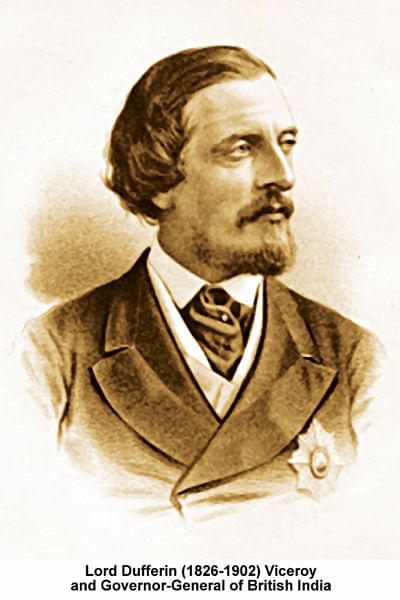
Tuesday, 27th: "In the evening we had a ball, which we reached with difficulty. The river is low here, and there are sand banks in all directions, and we went aground, and then had to turn back when we were just opposite our destination, and to go round quite a different way. Even then we could not get up to the house, and a small boat had to be sent for us. The view from the river was quite lovely. The town was again illuminated, and the shapes of all the buildings shown in lines of light against the sky made it look like a fairy city. The dance was given by the Club in a house lent by a native gentleman; the house and gardens were all illuminated. There were about twenty ladies and double the number of men, and a band from Calcutta, and the most silver programmes for us. Solid silver books, with my initials on one side and D.'s crest, collars, &c., on the other. What do you think of that! At supper D.'s health was proposed by Mr. Hopkins, the Commissioner, and as we left the ladies cheered from the balcony, and all the men from the quay, till we were out sight. The ball was very well done, and was very pretty, and the Viceroy danced ten dances without stopping, while I talked to all the ladies in turn"
Writer's note: In 19th century Dhaka, the two grandest palatial mansions were those of the Dhaka Nawabs called Ahsan Manzil and Ruplal House belonging to the wealthy Das brothers on the Buckland Bund, a popular promenade along the Buriganga River. Both houses presented a magnificent view from the river. However, on 7th April, 1888 a devastating tornado tore across Dhaka causing serious damage to the rear façade of the Rungmahal and the Andarmahal of Ahsan manzil, so much so, that the Khawja family had to temporarily relocate elsewhere for a while. However, the impending scheduled visit of the Dufferin's to Dhaka in late November that year, necessitated hurried renovation works to tidy up Ahsan Manzil. The unregistered Dhaka Club then located at Johnson road in old Dhaka, had also decided to give a Ball in honor of Lord and Lady Dufferin. There were only two available places for such an exclusive occasion, conveniently located in Dhaka: the Jalsaghar (dance hall) at Ahsan Manzil with a floor space measuring; length: 51' 0''x width: 24' 0'' and the other at Ruplal House measuring; length: 21' 9''x width: 14' 0'' with a splendid 300 feet long uninterrupted view of the river outside. The Dufferin's were already scheduled to be entertained by the Nawabs at Ahsan Manzil. However, the Ball could not be held there anyway, because the Nawabs were not members of the Dhaka Club, and thus could not be invited to attend the Ball, in accordance with the stringent membership rules of the Club. At that time, there was no native member of the Dhaka Club. It would remain so until 1914, when Nawabzada K M Habibullah ( later Nawab of Dhaka) became its first local member (please see my book: Dhaka Club Chronicles, 2009). So, under these peculiar circumstances in 1888, the Club was forced to settle for the smaller dance floor of the Ruplal House from the Das brothers, who although enormously rich were not titled gentry. Moreover, the Das brothers belonged more to the vernacular elite, whereas the non-vernacular Khawja's of Ahsan Manzil were not only the titular Nawabs, but also the premier zamindar of Dhaka district, fairly anglicized and thus a favorite of the colonial higher-ups. Therefore, selecting the space from the Das's did not require the Club to lose face, for not being able to invite them to the Ball on their own property, as would have been the case if the Ball was held at the Ahsan Manzil, besides being an untenable proposition to begin with.
Wednesday, 28th: "We are going back to Calcutta now, and spend this day in our barge and tomorrow in the railway." Writer's note: The Dufferin's on their visit to Dhaka spent three nights on a luxurious barge which was moored at Wiseghat. It was towed all the way from Calcutta by a special steamer up to Narayanganj, from where Lady Dufferin had sailed on it along the Sitalakhya and Buriganga rivers to reach Dhaka. At the conclusion of their visit, the Dufferins rested a whole day on their barge and left Dhaka the following morning, Thursday, 29th November, 1888, by a special train for Calcutta.
Waqar A Khan is the Founder of
Bangladesh Forum for Heritage Studies

 For all latest news, follow The Daily Star's Google News channel.
For all latest news, follow The Daily Star's Google News channel. 


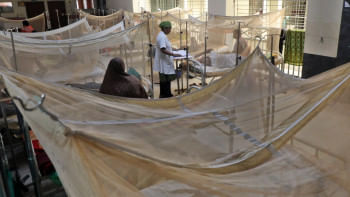
Comments